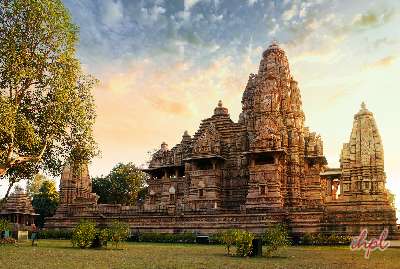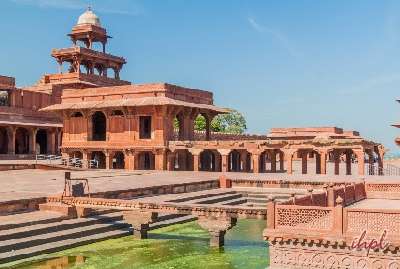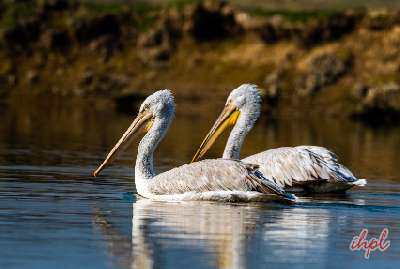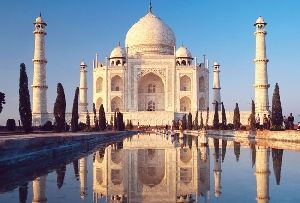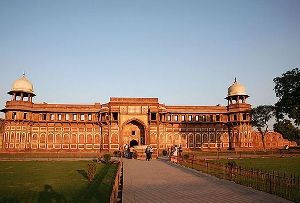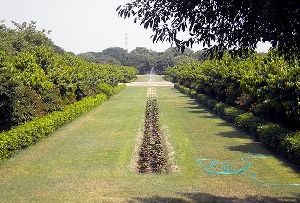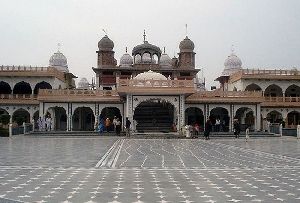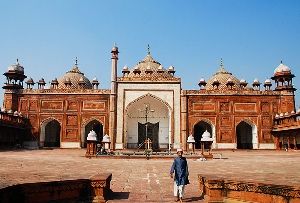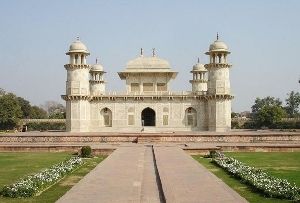Agra Travel Guide
Agra, located on the banks of the Yamuna River in Uttar Pradesh, is filled with rich history and culture. The city is dominated by the Taj Mahal, one of the Seven Wonders of the World, and many UNESCO World Heritage Sites. The city’s legacy is intertwined with the Mughal Empire, reflected in its monuments, gardens, and mosques. In addition, it boasts vibrant markets and delicious Mughlai cuisine, showcasing India’s artistic heritage through its handicrafts.
All these elements of Agra tourism make it a notable city of India that features in the Golden Triangle Tour along with Delhi and Jaipur. You should know this city’s essence to get the best out of it. To make it possible, the Agra travel guide covers everything the city offers and opens multiple windows into the past.
Monuments to Visit in Agra
Agra is known for its stunning Mughal-era architecture. Some of the best things to do in Agra include:- The Taj Mahal: Shah Jahan built this white marble mausoleum in memory of his wife, Mumtaz Mahal. It has intricate designs, symmetrical gardens, and a captivating reflection in the Yamuna River.
- Agra Red Fort : The world-famous red sandstone building, Agra Red Fort, was the residence of the Mughal emperors. It boasts unique architecture and contains palaces, halls, and mosques.
- Itimad-ud-Daulah : Baby Taj or Itimad-ud-Daulah, also known as a draft of the Taj Mahal, is the first tomb in India to be entirely made of marble and has elaborate inlay work.
- Akbar’s Tomb: The resting place of the great Mughal Emperor Akbar, this tomb perfectly fuses different architectural styles and depicts Akbar’s secular stance.
- Mariam uz Zamani’s Tomb: The tomb is dedicated to Akbar’s wife and shows a glimpse into the transition of culture & Mughal structures. Nestled amidst serene gardens, it has Islamic and Rajput architecture.
- Chini ka Rauza: This Indo-Persian-style tomb is of Allama Afzal Khan, a poet, scholar, and prime minister of Shah Jahan. It was the first monument built of glazed tiles during that time.
- Fatehpur Sikri: This ancient city briefly served as the capital of the Mughal Emperor Akbar. It is home to magnificent structures like Buland Darwaza and Jama Masjid.
Look at the most visited tourist places in Agra, showcasing the city’s rich history.
Religious Sites to Visit in Agra
Agra is home to various religious sites that reflect India’s diverse cultures, such as:- Jama Masjid: The Friday Mosque, or Jami Masjid, is a historic landmark with grand gateways, impressive domes, and intricate calligraphy. It remains an active place of worship in the city.
- Guru ka Taal Gurudwara: Dedicated to Guru Tegh Bahadur, this gurudwara features stunning architecture, with eight of its twelve original towers intact. It is both a place of worship and historical significance.
- Mankameshwar Temple: One of Agra’s oldest temples, Mankameshwar, is devoted to Lord Shiva. Locals highly regard it, believing wishes made here are fulfilled.
- Mangleshwar Nath Temple : A peaceful retreat dedicated to Lord Shiva, Mangleshwar Nath Temple attracts devotees year-round, especially during festivals.
- ISKCON Temple (Jagannath Temple) : Part of the International Society for Krishna Consciousness, this temple is a spiritual hub for Lord Krishna devotees, offering meditation, prayer, and participation in religious activities.
- Soami Bagh Temple: Also known as Radha Soami Samadh, this architectural marvel is the headquarters of the Radha Soami faith and welcomes visitors of all backgrounds.
- Bateshwar Temple: Bateshwar Temple complex includes over 100 Shiva temples along the Yamuna River and is renowned for the annual Bateshwar Fair, which draws thousands of pilgrims and tourists.
- St. George’s Cathedral: Built during the British colonial era, this Anglican cathedral in the Cantonment area is known for its simple Gothic architecture and is a place of worship for the Christian community.
- Bageshwar Nath Temple: An ancient temple dedicated to Lord Shiva, Bageshwar Nath is considered one of Agra’s holiest sites and is particularly vibrant during the Hindu festival seasons.
Also, check out the complete list of religious holy places in Agra for divine blessings.
Gardens to Visit in Agra
Get away from the hustle and bustle of the city and find tranquillity with these gardens and parks in Agra:- Mehtab Bagh: This bagh is situated across the Yamuna River and is recognised for offering spectacular views of the Taj Mahal at dusk.
- Taj Mahal Garden: The Charbagh garden right before the Taj Mahal signifies the Islamic concept of paradise and enhances the monument’s beauty.
- Rambagh: India’s oldest Mughal garden, Rambagh or Arambagh, was designed by Babur and, with its Persian-style layout, provides a peaceful environment.
- Taj Nature Walk Park: A natural trail near the Taj Mahal, ideal for bird-watching, experiencing the local flora and fauna, and scenic views of the Taj from different angles.
- Shah Jahan Garden:A well-maintained garden near the Taj Mahal, perfect for relaxation or picnics with lush greenery and blossoming flowers.
- Anguri Bagh: This garden is located within the Agra Fort complex and was once known for harvesting the wealthiest quality of grapes and flowers.
- Dayalbagh Garden: Surrounding the Dayalbagh Temple, this garden is known for its perfectly maintained lawns and flowerbeds.
- Paliwal Park: This park was a hunting ground in the past, but it today serves as a relaxing picnic spot and provides boating facilities.
- Motilal Park: Dedicated to Motilal Nehru, father of Jawahar Lal Nehru, this green spot in the city is excellent for morning walks and family outings.
Events & Festivals
Besides monuments, Agra is also a hub of lively festivals & events such as:- Taj Mahotsav: An annual 10-day festival held in February, honouring the art, culture, and cuisine of India with performances, crafts, and food stalls.
- Kailash Fair: Devoted to Lord Shiva, it takes place at the Kailash Temple and is marked by rituals, prayers, and local fairs.
- Bateshwar Fair: This cattle fair has religious significance and attracts traders, saints, and pilgrims across the region.
- Ram Barat: This event is a part of the Ramlila celebrations during Dusherra and is a grand procession representing the marriage of Lord Rama and Sita.
- Taj Literature Festival: This festival pays tribute to legends like Tansen, Mirza Ghalib, and Mir Taqi Mir and celebrates emerging writers and hidden talents.
Check the list of major festivals in Agra that showcase its rich culture and traditions.
Checkout: Vrindavan Tour Packages, Agra Tour Packages, Kushinagar Tour Packages, Uttar Pradesh Tour Packages, Varanasi Tour Packages
Wildlife SOS Agra
Wildlife SOS in Agra is a dedicated conservation organisation focused on protecting and rehabilitating India’s forests and wildlife health. Established in 1995, it operates with two prime initiatives: the Agra Bear Rescue Facility and the Elephant Conservation & Care Center. This organisation has gained international recognition for its efforts in rescuing distressed animals.
Agra Bear Rescue Facility – This is the world’s largest sloth bear rescue and rehabilitation centre. It was created to provide a haven for bears rescued from the cruel practice of ‘dancing bears,’ where they were forced to perform for entertainment. These bears now live in a peaceful, natural environment. Visitors can learn about their journey from captivity to freedom and observe them in surroundings that mimic their natural habitat. The centre also offers educational tours highlighting the challenges these animals face and the importance of conservation.
Location – Inside Sur Sarovar Bird Sanctuary/ Keetham Lake
Elephant Conservation and Care Center – Located near Agra, this sanctuary provides a haven for elephants rescued from abusive situations, such as forced labour in circuses or street begging. The centre ensures these majestic animals receive proper medical care, nutritious food, and the freedom to roam and socialise. Visitors can engage closely with the elephants, feed and bathe them, and gain insights into their lives. Guided tours offer information about the elephants’ histories, rehabilitation, and difficulties in captivity.
Location – NH2, Ghari, near Sachdeva Institute of Technology, Churmura, Uttar Pradesh 281122
Additional Tip – Wildlife SOS accepts a donation of 1500 INR, which includes a guided tour that supports animal welfare. The forest department offers an entry fee that does not include a guided tour.
Places to Eat in Agra
Agra offers diverse dining options, from fine dining restaurants to street food options catering to all tastes and budgets, such as:
Fine Dining Restaurants
- Peshawri: Located in ITC Mughal, Peshawri specialises in authentic North-West cuisine, including kebabs, dal bukhara, and tandoori dishes in a traditional setting.
- Pinch of Spice: A favourite among locals and tourists, Pinch of Spice offers a mix of Mughlai, North Indian, and Chinese dishes, including gravies, biryanis, and desserts.
- Jhankar: In Hotel Howard Plaza, Jhankar combines live music with a menu of Mughlai and North Indian dishes, providing a relaxed atmosphere for socialising.
Street Food
- Mughlai Paratha: These flaky parathas, stuffed with minced meat or spiced vegetables, are a taste sensation you shouldn’t miss.
- Bedai and Jalebi: Have your first meal with bedai and jalebi. Bedai is a deep-fried bread with spicy potato curry, while jalebi is a sweet treat to end your meal.
- Agra Petha: Taste petha, a translucent sweet made from ash gourd. It’s a must-try delicacy available in various flavours.
Where to Do Shopping in Agra
Shopping in Agra is a delightful experience. The city’s markets offer everything from exquisite handicrafts to traditional garments, which include:
Garments
- Sadar Bazaar: Agra’s famous market for traditional attire and leather goods.
- Subhash Bazaar: This specialises in silk sarees, embroidered textiles, and dress materials.
- Kinari Bazaar: The market is famous for juttis, trendy shoes and classic sandals.
- Leather Shoe Market: This features a wide selection of leather shoes, from formal to casual, at reasonable prices.
- Taj Mahal Miniatures: Marble replicas of the Taj Mahal in various sizes.
- Marble Inlay Work: Beautiful marble items like coasters, table tops, and decorative pieces with intricate designs.
Best Time to Visit Agra
Agra experiences three seasons:- Hot summers
- Monsoon season
- Cool winters
Summer (April to June)
Summers are scorching, with temperatures above 40°C, making sightseeing challenging. However, early mornings and late evenings are best for exploring the city.Monsoon (July to September)
The monsoon brings occasional heavy rainfall and relief from the heat. While the city looks lush and green, rain can disrupt travel plans. However, this season offers a quieter experience at popular sites like the Taj Mahal.Winter (October to March)
This is the ideal time to visit Agra, which is the peak tourist season. The weather is pleasant, with clear skies and temperatures ranging from 8°C to 20°C. This period also features festivals like Diwali and the Taj Mahotsav, enhancing the travel experience.Getting Around Agra
Commuting within Agra is convenient due to the availability of several modes of transportation, such as:- Auto Rickshaws: Affordable and widely available; negotiate the fare before starting.
- Cycle Rickshaws: Best for short trips and exploring narrow lanes.
- Buses: Economical and well-connected with significant city areas.
- Metro: Modern and most efficient way to travel between key city areas.
- Rental Taxis: Allows you to traverse at your own pace and can be booked through hotels, Ola/Uber, or at a stand.
- Walking: Ideal for exploring closely located places and observing the hustle-bustle of the city.
Use our comprehensive guide on how to get to Agra to plan your trip.
Where to Stay in Agra
Agra offers various accommodation options, categorised according to different budgets and preferences, such as:Luxury Hotels
- The Oberoi Amarvilas: A luxurious 5-star property with Mughal-inspired architecture and outstanding Taj Mahal views.
- ITC Mughal: This extravagant hotel is a tribute to the Mughal era. It offers a regal experience with modern amenities.
- Taj Hotel & Convention Centre: Located near the Taj Mahal, featuring trendy rooms, a rooftop infinity pool, and extensive event facilities.
Mid-Range Hotels
- Courtyard by Marriott: This trendy hotel offers comfortable rooms with free Wi-Fi, a fitness centre, and an outdoor pool. It is conveniently located in the city centre, making it ideal for exploring the city.
- Trident Agra: A mid-range hotel with beautiful gardens, spacious rooms, and an outdoor pool, and it offers Indian and international dishes.
- Howard Plaza—The Fern: This eco-friendly hotel offers a balance of comfort and affordability, including a rooftop pool, making it an excellent option for families and couples.
Budget Hotels
- Hotel Sheela: This is a cost-effective option near the Taj Mahal, offering clean, simple rooms. It is ideal for backpackers and budget travellers focused on location.
- Hotel Taj Plaza: A basic hotel within walking distance of the Taj Mahal, perfect for travellers seeking affordability close to major attractions.
Tips for Visiting Agra
- Visit Early: To avoid the crowds and enjoy a serene view of the monuments, visit at dawn. The sunrise view is spectacular, offering fantastic photography opportunities.
- Beware of Scams: Be cautious of relentless guides or shopkeepers, and always agree on prices beforehand. Also, avoid purchasing things from unofficial places.
- Book Tickets Online: To save time, book your entry tickets online. This way, you can skip the long queues at the ticket counters.
- Carry Cash: While cards are accepted, it’s wise to carry cash for small purchases, tips, and street food.
Agra Itinerary
1 Day Agra Itinerary:- Morning: Start your day with a visit to the Taj Mahal at sunrise. Afterwards, head to Agra Fort (4.9 km/ 15 min) to explore its rich history and architecture.
- Afternoon: Visit Itimad-ud-Daulah (Baby Taj) and have lunch at a local restaurant. Then, proceed to Mehtab Bagh for a sunset view of the Taj Mahal.
- Evening: End your day by exploring Sadar Bazaar for some shopping and try the local street food.
- Morning: Visit the Taj Mahal at sunrise, followed by breakfast at your hotel. Further, explore Agra Fort and then visit Jama Masjid.
- Afternoon: Have lunch and then head to Sikandra to see Akbar’s Tomb. If time permits, visit Mariam-uz-Zamani’s Tomb.
- Evening: Enjoy a relaxing dinner after a cultural show.
- Morning: Visit Fatehpur Sikri and explore its palaces, mosques, and the Buland Darwaza.
- Afternoon: Head towards Chini ka Rauza and the Tomb of Itimad-ud-Daulah after lunch.
- Evening: Spend the evening at Mehtab Bagh for a sunset view of the Taj Mahal. Later, enjoy dinner and shop for souvenirs.
Go Next
After exploring Agra, there are several nearby destinations worth visiting:- Jaipur: Known as the Pink City, Jaipur is famous for its palaces, forts, and vibrant markets. Along with Agra and Delhi, it’s part of the Golden Triangle.
- Delhi: The capital of India, Delhi offers a mix of historical sites, modern attractions, shopping, and diverse culinary options.
- Bharatpur: Home to the Keoladeo National Park, a UNESCO World Heritage Site, Bharatpur is a birdwatcher’s paradise with over 370 species of birds.
- Mathura and Vrindavan: These twin cities are important pilgrimage sites for Hindus and are known as central locations in Lord Krishna’s life.
- Gwalior: This massive city near Agra is known for its majestic fort, intricate palaces, and historical temples.




